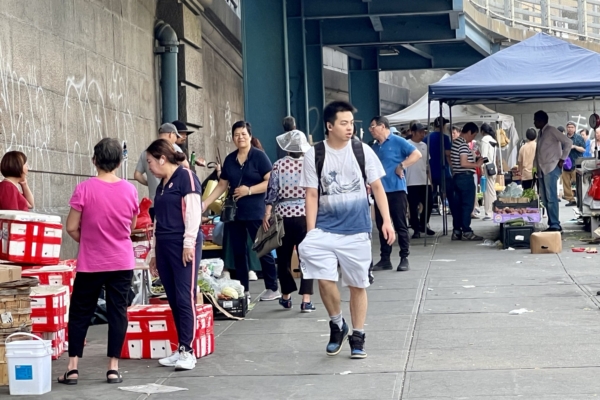New York City Police Department recently released data showing a continuous rise in retail theft cases citywide, with the precinct in Manhattan’s Chinatown being particularly hard-hit. As the year-end shopping season approaches, commercial activities are becoming even more active, presenting continued challenges in preventing theft.
According to police statistics, in the past 28 days leading up to November 24, there have been a total of 5,097 reported retail theft cases in New York City, representing a more than 15% increase compared to the same period last year when there were 4,427 cases. In just the past week, such cases have reached 1,288, marking a 28.5% increase year-on-year.
The increase in crime data in Manhattan’s Chinatown within the precinct has been particularly noticeable, with 105 cases of commercial retail theft reported in the area in the past 28 days, compared to 26 cases during the same period last year, representing a surge of over 300%. Just within the last week, the number of cases has increased by over 180%.
Throughout the year, various theft and robbery crime patterns have been seen across New York City. Incidents in the Chinatown community that have made headlines include suspects entering banks and demanding money from staff by passing notes; and robbers directly snatching wallets from street vendors, such as in June this year when a couple surnamed Chen near East Broadway on Forsyth Street were robbed of a wallet containing three thousand dollars during their street vending. The suspect was eventually captured by residents in the area.
The head of the police precinct has repeatedly stated in community meetings that the East Broadway street in Chinatown is a hotspot for retail theft cases. Mr. Lin, a nearby resident, recently told reporters that he often sees acts of thievery and pickpocketing.
Some business owners on East Broadway express difficulties in curbing theft, as even alerting authorities doesn’t always stop the problem. Mr. Jiang, a grocery store owner, mentioned that “zero-cost shopping” happens nearly every day, with thieves walking off without paying, sometimes just a few dollars, other times twenty or thirty dollars. When confronted, thieves sometimes drop the goods upon reminders, but often remain unfazed even after multiple reminders. He expressed concerns about potential armed thieves, making it risky to confront them. One reason for reluctance in reporting incidents is the possibility of having to close the shop for court appearances, potentially losing business and not necessarily recovering losses.
Ms. Liu, who runs a fashion store, suggested that reporters visit Grand Street Park, as her store has had two or three items, to as many as seven or eight items stolen. She noted that during the summer, stolen clothing was sold for as low as three to five dollars each, making it difficult to track down thieves, especially when they disappear after getting off the subway. She hopes for continued police efforts to track down those selling stolen goods to eradicate the phenomenon of “zero-cost shopping.”
With Thanksgiving followed by Western Christmas and New Year’s, and then the Chinese Lunar New Year approaching, Chinese consumer spending is also on the rise. To avoid becoming targets of robbers, businesses are urging increased police patrols.

